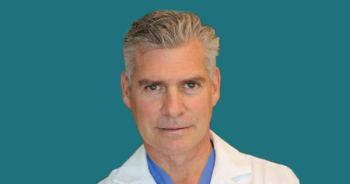
Giant Axonal Neuropathy Gene Therapy Well-Tolerated in High-Dose Cohort
The positive news is countered by a report of a patient death in Taysha’s gene therapy program for GM2 gangliosidosis.
TSHA-120, an investigative gene therapy developed by
“The totality of data generated by TSHA-120 to date support our plans to engage with major regulatory agencies in order to discuss pathways for registration and we look forward to providing a regulatory update later this year,” RA Session II, president, founder and chief executive officer, Taysha, said in a statement.1 “In the interim, we are finalizing our commercial strategy with a focus on patient identification, disease awareness and payor engagement for the estimated 5,000 affected patients in addressable markets.”
The trial, which is being conducted by the National Institute of Neurological Disorders and Stroke (NINDS) division of the National Institutes of Health (NIH), has found that after 1 year, the high-dose cohort (3.5x1014 total vg) had a 5-point improvement in the change in rate of decline in 32-item Motor Function Measure (MFM32) score compared with natural history decline of 8 points (n=3; P = .04). Across all cohorts, treated participants had a 7-point improvement in the change in rate of decline in MFM32 score (n = 12; P < .001) at year 1 and a 10-point improvement in the mean change from baseline in MFM32 score compared to estimated natural history decline of 24 points by Year 3 (n=5).
Investigators also found that in the first patient to reach 5 years of follow-up, there was a 26-point improvement in change from baseline in MFM32 score compared to estimated natural history. Bayesian analysis of the 53 patient-years of clinical data revealed a 97% probability of slowed disease progression of at least 50% in treated participants.
READ MORE:
Biomarkers were also analyzed and revealed active axon regeneration with an increased number of regenerative nerve clusters in 5 of 6 participant samples. Visual acuity (VA) was preserved across all cohorts compared to natural history progressive VA loss (n = 12). Compared to natural history, retinal nerve fiber layer thickness was stable and axonal nerve degeneration was prevented.
Taysha’s chief medical officer and head of research and development,Suyash Prasad, MBBS, MSc, MRCP, MRCPCH, FFPM, added to the statement, saying “these results are consistent, clinically meaningful and statistically significant. Notably, analysis across all therapeutic dose cohorts confirms the sustained long-term durability of effect for TSHA-120-treated patients. These data also provide new evidence of TSHA-120’s ability to regenerate nerve fibers, demonstrating an improvement in disease pathology, and to preserve visual acuity, which should significantly benefit patients’ and families’ quality-of-life.”1
Taysha is looking to start the pathway to approval in the US and EU for the gigaxoningene replacement therapy following the positive data announcement. Taysha will provide a regulatory update by the end of the second quarter on the pathway and whether the company will file for approval with the available data, dose more participants in the trial, or initiate an additional, pivotal trial.
Another of Taysha’s gene therapy programs, TSHA-101, recently demonstrated positive data in GM2 gangliosidosis, but the data were overshadowed by the reported death of a treated participant.2 The participant had experienced clinical improvements in their Sandhoff diseasebefore returning home at 3 months, where they were exposed to an upper respiratory infection, possible COVID-19 and were hospitalized with pneumonia and contracted a secondary hospital-acquired methicillin-resistant staphylococcus aureus infection.
While the death was deemed unrelated to TSHA-101 treatment, Prasad acknowledged that the treatment’s immunosuppressive regimen may have contributed to the death in a conference call in late January and that protocols may be amended moving forward.
“There could have been a contribution by the immunosuppression rating. That’s something that we are monitoring and talking about with the data safety monitoring board and our immunology advisers,” Prasad said during the call.2 “It's possible that we may reduce the duration or dose a little bit, but not too much. And it's also possible we'll bring in a bit more flexibility and use PI discretion with regards specifically to the suppression regime that's used.”
REFERENCES
1. Taysha Gene Therapies Reports Positive Clinical Efficacy and Safety Data for High Dose Cohort and Long-term Durability Data for TSHA-120 in Giant Axonal Neuropathy. News release. Taysha Gene Therapies. January 31, 2022. https://www.businesswire.com/news/home/20220131005317/en/Taysha-Gene-Therapies-Reports-Positive-Clinical-Efficacy-and-Safety-Data-for-High-Dose-Cohort-and-Long-term-Durability-Data-for-TSHA-120-in-Giant-Axonal-Neuropathy
2. Taysha Gene Therapies Announces Positive Initial Biomarker Data For TSHA-101, the First Bicistronic Gene Therapy in Clinical Development, Demonstrating Normalization of β-Hexosaminidase A Enzyme Activity in Patients With GM2 Gangliosidosis. Taysha Gene Therapies. January 27, 2022. https://www.businesswire.com/news/home/20220127005353/en/Taysha-Gene-Therapies-Announces-Positive-Initial-Biomarker-Data-For-TSHA-101-the-First-Bicistronic-Gene-Therapy-in-Clinical-Development-Demonstrating-Normalization-of-%CE%B2-Hexosaminidase-A-Enzyme-Activity-in-Patients-With-GM2-Gangliosidosis/
Newsletter
Stay at the forefront of cutting-edge science with CGT—your direct line to expert insights, breakthrough data, and real-time coverage of the latest advancements in cell and gene therapy.











































